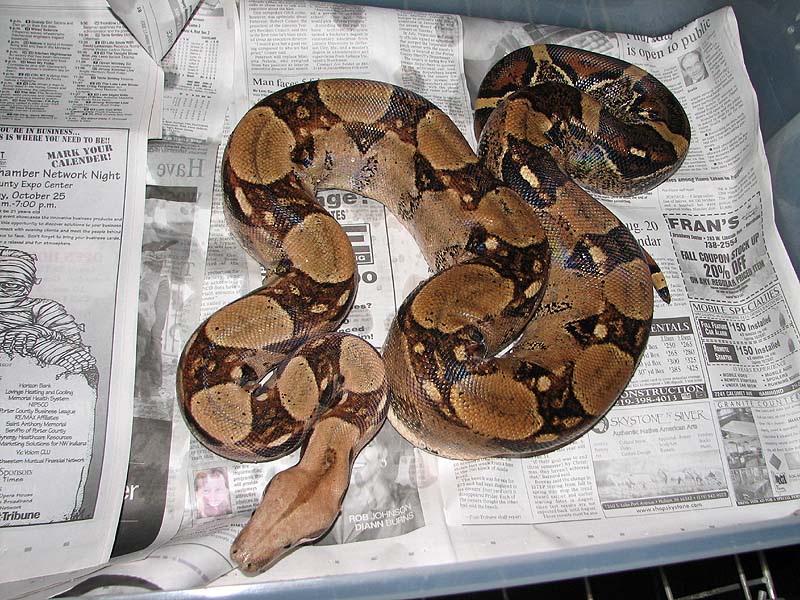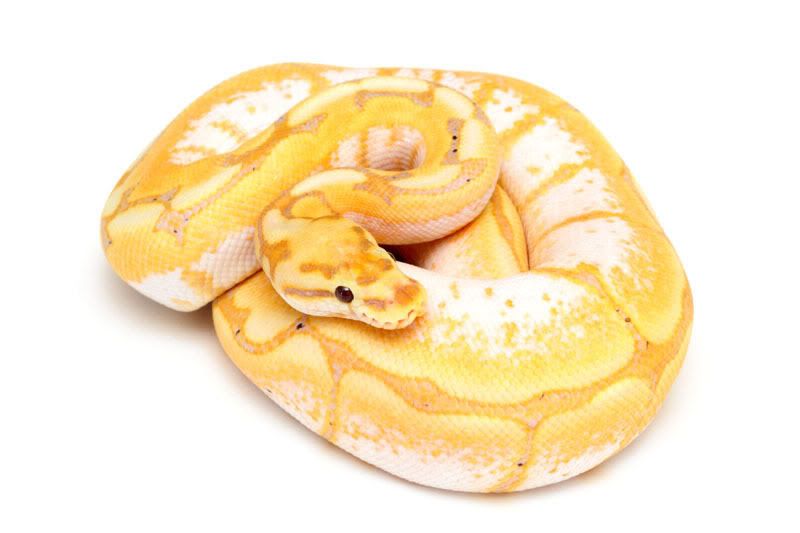One of my favourite type of reptiles is a royal python due to the variety of colours and genetics. In today's post I have decided to keep things simple and list twenty-five of my favourite morphs and genetic traits.
1. Super Orange Dream Spider Fire Yellowbelly
First produced by OzzyBoids in 2012. This is my dream python. The colours really grab your attention and because it has 4 genes, it would make a very interesting breeding project.
2. Nuclear Spinner
First produced in 2011 by Mike Wilbanks. I like this snake because it looks so clean and the reduction in the head pattern is lovely. Almost looks leucistic with a bit if striping.
3. Butter Genetic Stripe
The contrast of this snake is gorgeous. The butter gene really smooths out the tones. I'd love to have one of these in my collection.
4. Purple Passion
Produced first by NERD in 2011. What can I say, I'm a girl and I love purple!
5. Fire Spider Banana
First produced by Brock Wagner in 2011. I love the bright tones and the high whites in this snake. The subtle hints of purple really set this snake off.
6. Enchi KillerBee
First produced in 2011 by NERD. I'm a huge fan of the bee gene so adding more genes to it will always make the offspring beautiful and more interesting.
7. Calico Champagne Pastel
Sunglasses on for this one. I love the vivid neon tones to this snake. I have no other words to describe this beauty.
8. Lesser Desert Enchi Spider Yellowbelly
First produced in 2013 by Royalsnakes & Austrian Reptiles. Love how clean this is.
9. Lucifer Pastel
First produced by NERD. The contrast of the black and yellow is out of this world. A truly beautiful snake.
10. Orange Dream Bumblebee
First produced in 2012 TnT Reptiles. It's simply beautiful- colours, stripes, contrast, the whole snake!
11. Orange Dream Spinner Blast
12. Mojave Bumblebee Calico
First produced in 2012 by Markus Jayne Ball Pythons.
13. Nuclear Superfly Enchi
First produced in 2013 by Cody St. Cyr
14. Bumblebee
First produced in 2001 by NERD
15. Pinstripe
First produced (in captivity) by BHB Enterprises in 2001
16. Mojave
First produced in captivity in 2000 by The Snake Keeper.
17. Butter
First produced (captive bred) in 2001 by Reptile Industries / ReptMart.
18. Stinging Bumblebee
First produced in 2006 by NERD.
19. Sugar Fly
Produced for the first time by Mike Wilbanks in 2011.
20. Sugar Spider Mojave
First produced by Fred Kick in 2012.
21. Super Fire
First produced in 2002 by Eric Davies
22. Super Pastel Butter GHI
First produced in 2013 by Sam Phillips.
23. Super Quake
First produced in 2012 by Dan Wolfe.
24. Nuclear Bumblebee
First produced in 2011 by Mike Wilbanks.
25. Orange Dream
First produced by OzzyBoid in 2004.







































